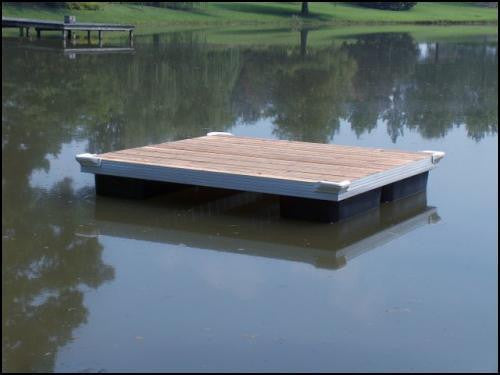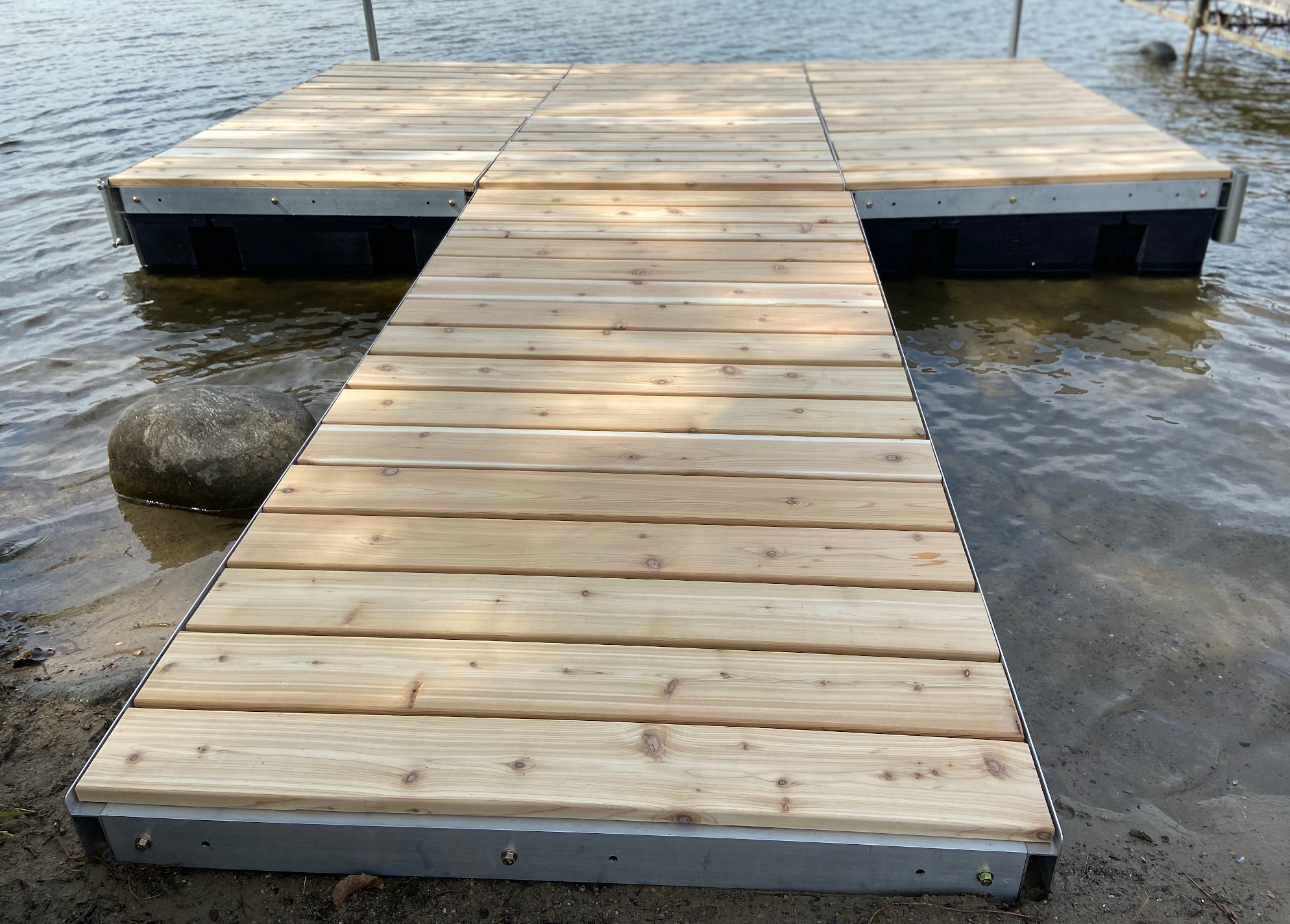Exactly How Floating Dock Company Experience Can Raise Your Waterfront Experience
Exactly How Floating Dock Company Experience Can Raise Your Waterfront Experience
Blog Article
Create the Perfect Docking Option With Floating Docks
Floating docks present a functional solution for a variety of maritime needs, adapting seamlessly to fluctuating water levels and varied vessel kinds. As we check out the vital elements that add to the effectiveness of floating docks, several vital aspects regarding stability and upkeep will emerge, raising questions concerning just how to maximize your docking experience.

Advantages of Floating Docks
Floating docks deal many advantages that make them a suitable choice for different maritime applications. Unlike fixed docks, floating docks increase and loss with the trend, ensuring constant access for vessels.
Additionally, floating docks are generally less complicated and quicker to set up contrasted to traditional fixed structures. Their modular design permits straightforward setting up and disassembly, helping with maintenance and moving when required. This adaptability is especially useful for temporary applications or in environments where conditions might change.
Floating docks also often tend to be more eco-friendly, as they lessen disturbance to the seabed and bordering water communities. Their resilient nature minimizes the danger of damages to aquatic life, promoting a much healthier atmosphere. These docks can be customized to accommodate numerous vessel dimensions, guaranteeing that they fulfill certain functional needs.
Eventually, the mix of adaptability, simplicity of setup, and environmental considerations makes floating docks a very efficient option for a variety of maritime demands.
Selecting the Right Products
Picking the appropriate products for floating docks is crucial to ensure stability, longevity, and longevity. The selection of products directly affects the dock's efficiency in numerous environmental conditions, consisting of exposure to water, sunshine, and possible wear from aquatic website traffic.
Usual materials utilized for floating docks include light weight aluminum, timber, and high-density polyethylene (HDPE) Aluminum is lightweight, corrosion-resistant, and calls for very little upkeep, making it a superb choice for longevity. Nonetheless, its first expense can be higher contrasted to various other products.
Timber, while visually appealing and providing a traditional appearance, can be vulnerable to rot and bug damages otherwise correctly dealt with. Using pressure-treated wood or naturally resilient species like cedar or redwood can alleviate these issues.
HDPE is a popular selection as a result of its resistance to UV rays and chemicals, along with being eco-friendly. floating dock company. It is available and lightweight in different shades, enabling customization
Inevitably, the best material selection will depend on certain requirements, including budget, preferred looks, and environmental considerations. Careful evaluation of these variables will certainly result in a resistant and successful floating dock solution.
Layout Factors To Consider for Stability
When creating floating docks, ensuring security is a basic element that can significantly impact their functionality and safety. Security in floating dock design is affected by numerous variables, including buoyancy, weight circulation, and the plan of parts. An ideal buoyancy system should utilize products that offer enough lift while minimizing weight. This balance ensures that the dock stays above water, also under varying tons.
Weight distribution is important; evenly distributing tons across the dock protects against turning and enhances here are the findings stability. This can be attained through calculated positioning of docking devices, such as fenders and cleats, along with proper spacing of floats. Furthermore, the measurements of the dock need to be attentively prepared. Wider layouts can use increased stability, specifically in harsh water problems, while longer docks may call for additional assistances to stop sagging.
One more crucial factor to consider is the ecological impact, including wave action and wind. Integrating functions such as sidewalls or skirting can assist minimize the impacts of ecological pressures, maintaining security in damaging problems. Inevitably, a combination of thoughtful design, material choice, and understanding of ecological elements will generate a floating dock that meets both stability and safety needs.
Installment Tips and Strategies

Following, secure the necessary authorizations and adhere to local laws, which may dictate setup methods and ecological considerations. If needed, involve a qualified contractor experienced in floating dock installations. Usage high-quality products developed for aquatic atmospheres to enhance longevity and durability.
When placing the dock, straighten it identical to the shoreline to assist in simple gain access to. Guarantee that the anchoring system is robust, employing cinder block or helical supports to maintain the dock against wind and wave activity. It's important to represent seasonal water level fluctuations, consisting of potential ice activity in chillier environments.
Throughout the installation, double-check the dock's floatation and stability prior to finalizing the anchoring. On a regular basis check the installment for any kind of indications of wear or damages. By adhering to these strategies and pointers, you can achieve a secure, functional, and visually pleasing floating dock setup that satisfies your needs.
Upkeep and Care Standards
Caring and keeping for floating docks is crucial to extending their lifespan and making certain safe usage. Regular assessments should be carried out to recognize any type of indications of wear, damages, or aquatic growth. Try to find splits, loose fittings, or stained locations on the dock's surface, as these issues can jeopardize architectural stability.
Cleaning up is wikipedia reference important. Make use of a pressure washer to remove algae, barnacles, and particles, which can accumulate over time. For stubborn growth, consider eco-friendly cleaner that will not hurt aquatic life.
Additionally, inspect the mooring lines and supports frequently to ensure they are cost-free and safe and secure from rust. Change any type of frayed or damaged lines quickly to preserve security.
Throughout severe climate, such as tornados or freezing conditions, take preventive actions. Secure the dock with additional mooring lines and, if practical, remove any type of removable components to avoid damages.
Conclusion
In verdict, the application of floating docks presents a functional and efficient docking service ideal for different maritime applications. With appropriate setup and routine maintenance, floating docks can provide effective and reputable docking experiences for a large array of vessels.
As we discover the essential elements that contribute to the effectiveness of floating docks, a number of crucial factors pertaining to stability and maintenance will emerge, increasing concerns about how click here to read to enhance your docking experience. Unlike fixed docks, floating docks surge and loss with the trend, ensuring regular access for vessels.When developing floating docks, making certain security is a fundamental facet that can dramatically impact their performance and safety and security. Security in floating dock layout is influenced by various variables, including buoyancy, weight circulation, and the setup of parts. Eventually, a combination of thoughtful style, product option, and understanding of ecological factors will yield a floating dock that meets both security and safety and security requirements.
Report this page